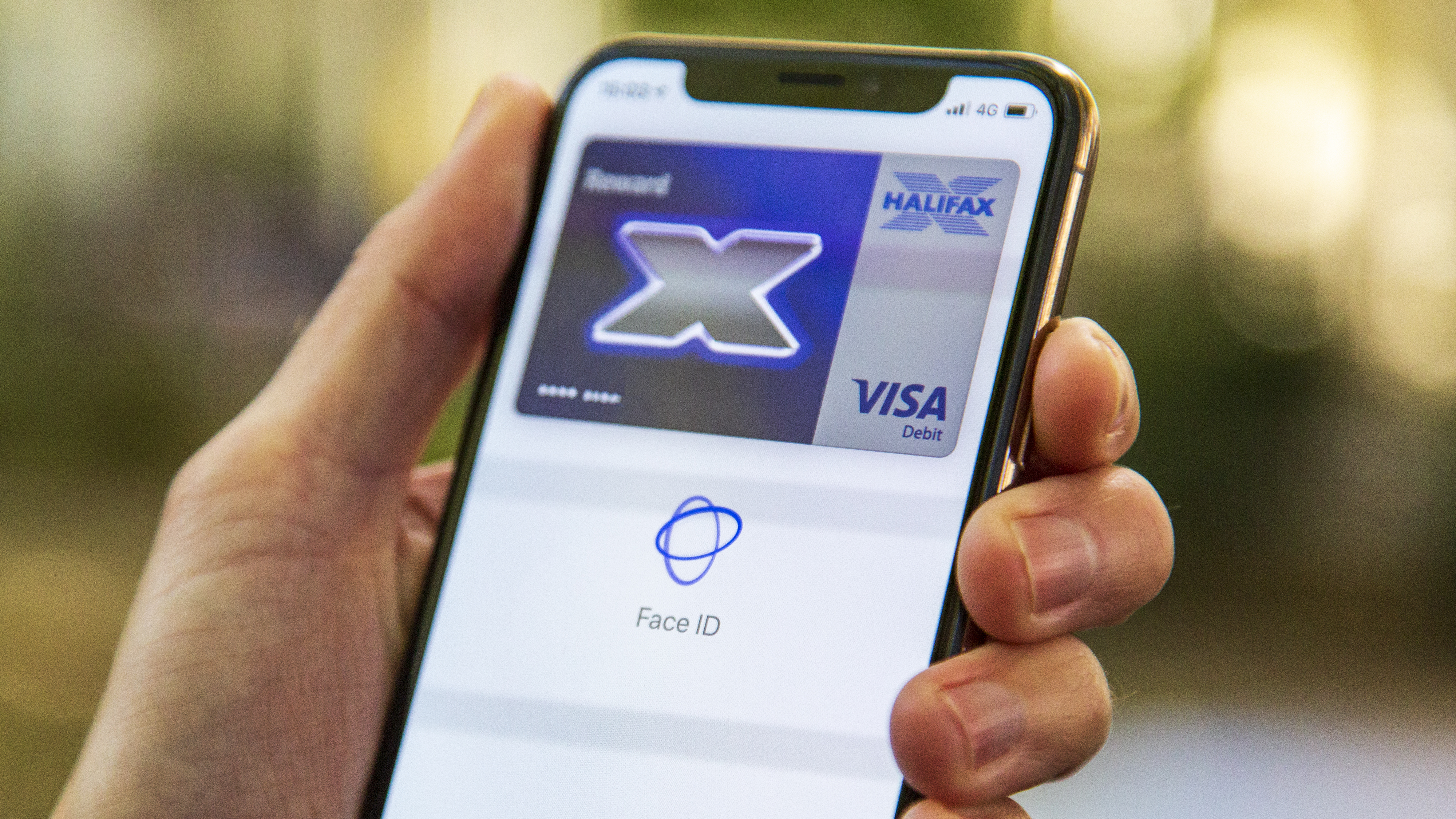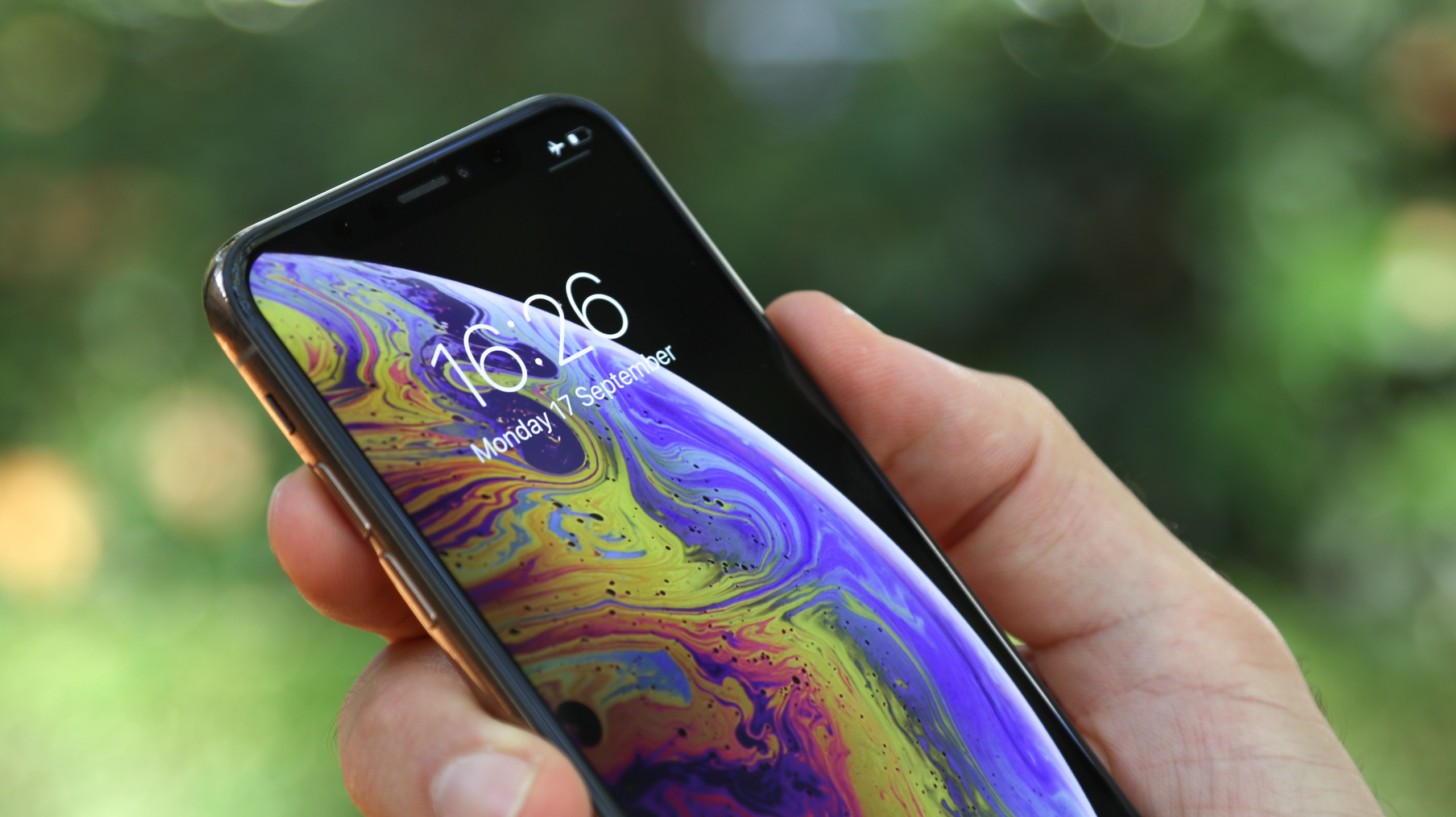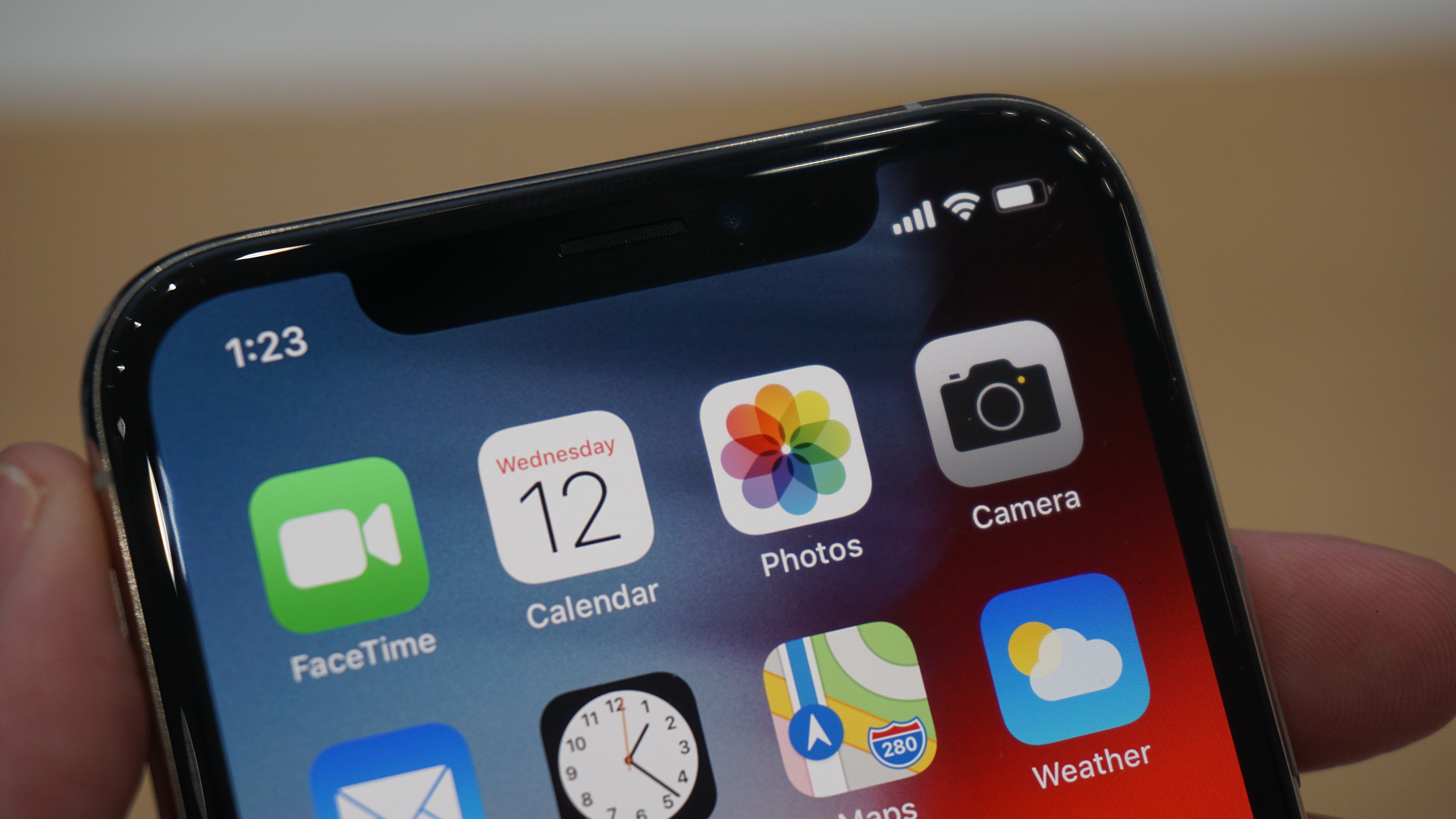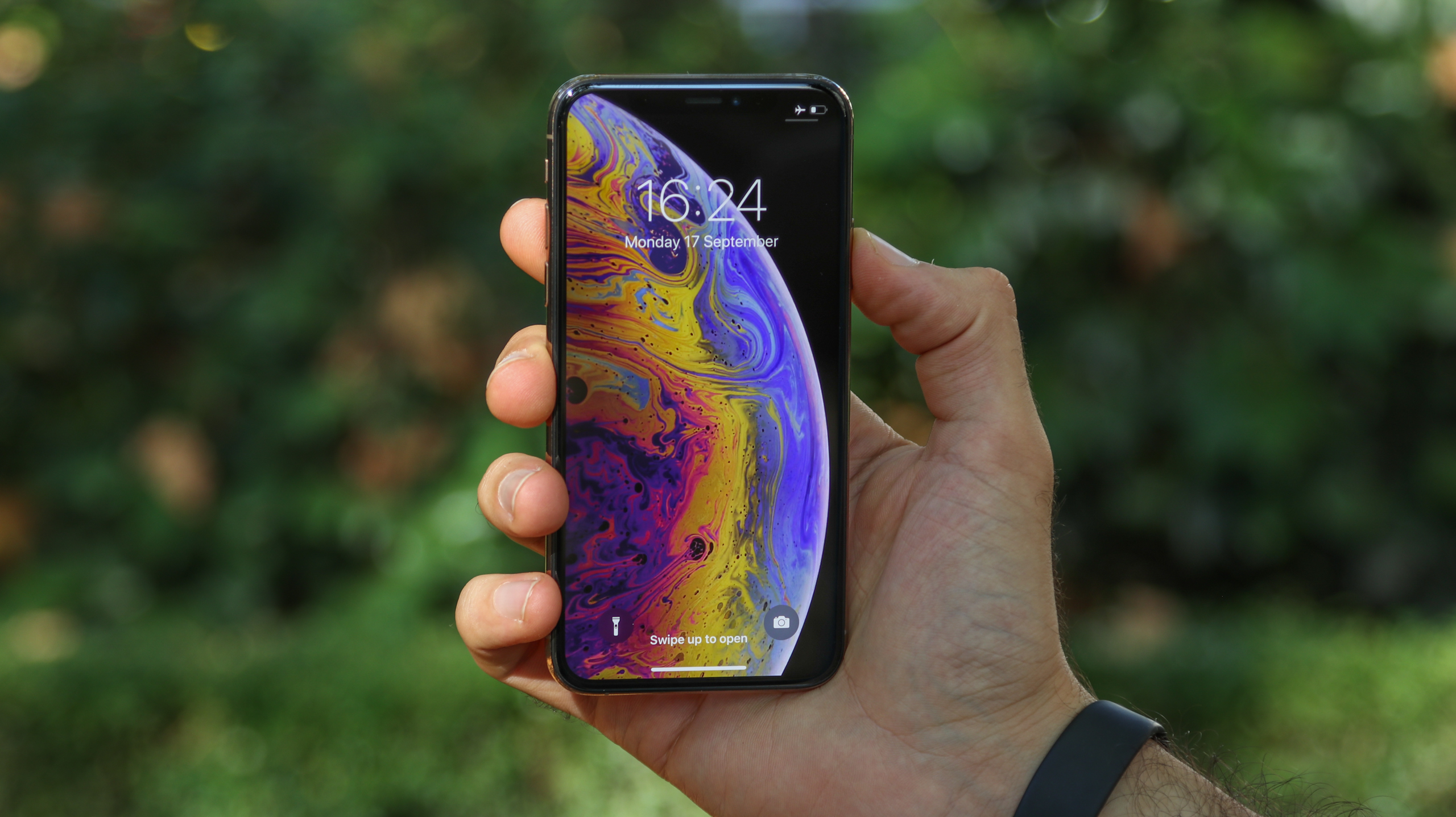Why you can trust TechRadar
Apple is touting the iPhone as the most secure phone for facial recognition, and that's a fully believable claim. As a brand, it goes to great lengths to stress the security it offers for your biometric data, meaning it should be almost impossible to hack said data.
For those who aren't aware, Face ID works by scattering your face with infrared dots to create a mathematical model of your visage. From that, you can unlock your phone with a single glance and pay for items too, for instance when using your bank card on Apple Pay.
Apple is claiming that this process is quicker than it was before, but we didn't notice a discernible speed improvement.

We did find that Face ID was more accurate for us than other people have stated, so perhaps we've just been lucky there (except perhaps a couple of times in direct sunlight) and those unsure about Face ID as a way to get into their phone will be satisfied with the slick unlocking method on the iPhone XS.
Face ID even works through many pairs of sunglasses, although get ready for that to be far more hit and miss, and for you to need to type in your passcode. Also, while Apple would claim they’re less secure, we would say other phones with facial recognition unlock a touch faster.
If you want the best version of Face ID though you won't find it here, as Apple has further improved the tech for the iPhone 11 range.
iOS 12
- Grouped notifications are handy
- Speed improvements can be felt
- Memoji is fun to play with

Editor's Note: the iPhone XS now runs iOS 13 software, but we've yet to update this review with our latest findings. Below is about the features that were to be found on the device at launch.
It’s perhaps a little redundant to rate the iPhone XS on whether iOS 12 is any good, simply because it’s now available on most Apple handsets – but the XS is the poster child for the platform, and it does pack some neat and useful tricks.
We’ve already covered the speed enhancements, which are largely down to the iPhone XS being at least 10% more powerful than previous models. However, the experience of zipping through the iOS 12 interface, which relies on the same gestures, taps and swipes as the iPhone X, with no hint of slowdown, is welcome.
For those coming from an iPhone with a physical button, it will take some time to get used to the new way of doing things on the iPhone XS. Swiping up from the bottom of the display is the new method of getting back to the home screen, but within minutes you’ll start to understand that this is a very useful gesture.
Swiping your finger along the bottom of the screen will flip you back and forth through apps that you’ve recently used, which is much-needed given that the ‘new’ way of checking out your currently running apps is to ‘half-swipe’ up and wait until they all appear. It’s a little tricky as a gesture.
There are three enhancements that we liked in iOS 12, and which we feel really bring something new to proceedings. The first of these is grouped notifications.
This doesn’t sound like much, but when you’re picking up your handset for the first time in an hour or two, you’re not flooded with a huge, long list of notifications if you’ve been caught in an email chain or someone has liked a ton of your photos online*.
A simple tap opens them back up to scroll through, or a swipe will take you into the app itself so you can deal with the fallout there.
The second improved element is Screen Time, which allows you to monitor how much you’re picking up your phone, and what’s distracting you, and allows you to set usage limits on certain apps that you’re using too much.
It’s a nice idea, but requires a certain amount of willpower and desire from the user in the first place – when you’re down and want to scroll through Instagram beyond your limits to take your mind off things, you’re always going to be a bit kinder to yourself.
That said, just the act of highlighting when you’re going too long can initiate change by making you notice the behavior, so this is a neat addition – plus it really allows you to shape how children are using iPhones and iPads online.
If you like iOS 12, you're bound to love iOS 13, which is going to bring loads of extras to your iPhone XS like Dark Mode and speed increases, when it hits devices starting on September 19 - which is tomorrow at the time of writing.

Finally, we get to Memoji, the enhancement to Animoji that Apple debuted last year. While there's still the variety of animals and… things (aliens and robots and suchlike) that the TrueDepth camera on the front of the iPhone XS will map your facial movements to, there’s now the chance to create your own likeness and add it into the mix.
This is rather reminiscent of Samsung’s AR Emoji (which, in turn, was already clearly based on Apple’s Animoji), but what’s different on the iPhone XS is that your Memoji is a blank slate to start with, which you build up through different hair, skin, eyebrow and other facial element choices, whereas Samsung’s ‘guesses’ by scanning your face.
The result is pretty good and close to life – there are suggestions of which items to choose to best fit your face – and you can then use this to send voice messages complete with mimicked face gestures to pals on iMessage (or send them as videos on other messaging platforms).
It's worth noting that since launch the iPhone XS has been updated to iOS 12.1.4, with iOS 12.2 on the way. These updates have added over 70 new emoji, Group FaceTime for up to 32 participants, and eSIM support.
(*We assume that’s how it would feel to be that popular. All we got was a WhatsApp picture of a cat from our mother).
Current page: Face ID improvements and iOS 12
Prev Page A12 Bionic: making a more powerful iPhone Next Page Design and screen
Gareth has been part of the consumer technology world in a career spanning three decades. He started life as a staff writer on the fledgling TechRadar, and has grew with the site (primarily as phones, tablets and wearables editor) until becoming Global Editor in Chief in 2018. Gareth has written over 4,000 articles for TechRadar, has contributed expert insight to a number of other publications, chaired panels on zeitgeist technologies, presented at the Gadget Show Live as well as representing the brand on TV and radio for multiple channels including Sky, BBC, ITV and Al-Jazeera. Passionate about fitness, he can bore anyone rigid about stress management, sleep tracking, heart rate variance as well as bemoaning something about the latest iPhone, Galaxy or OLED TV.
